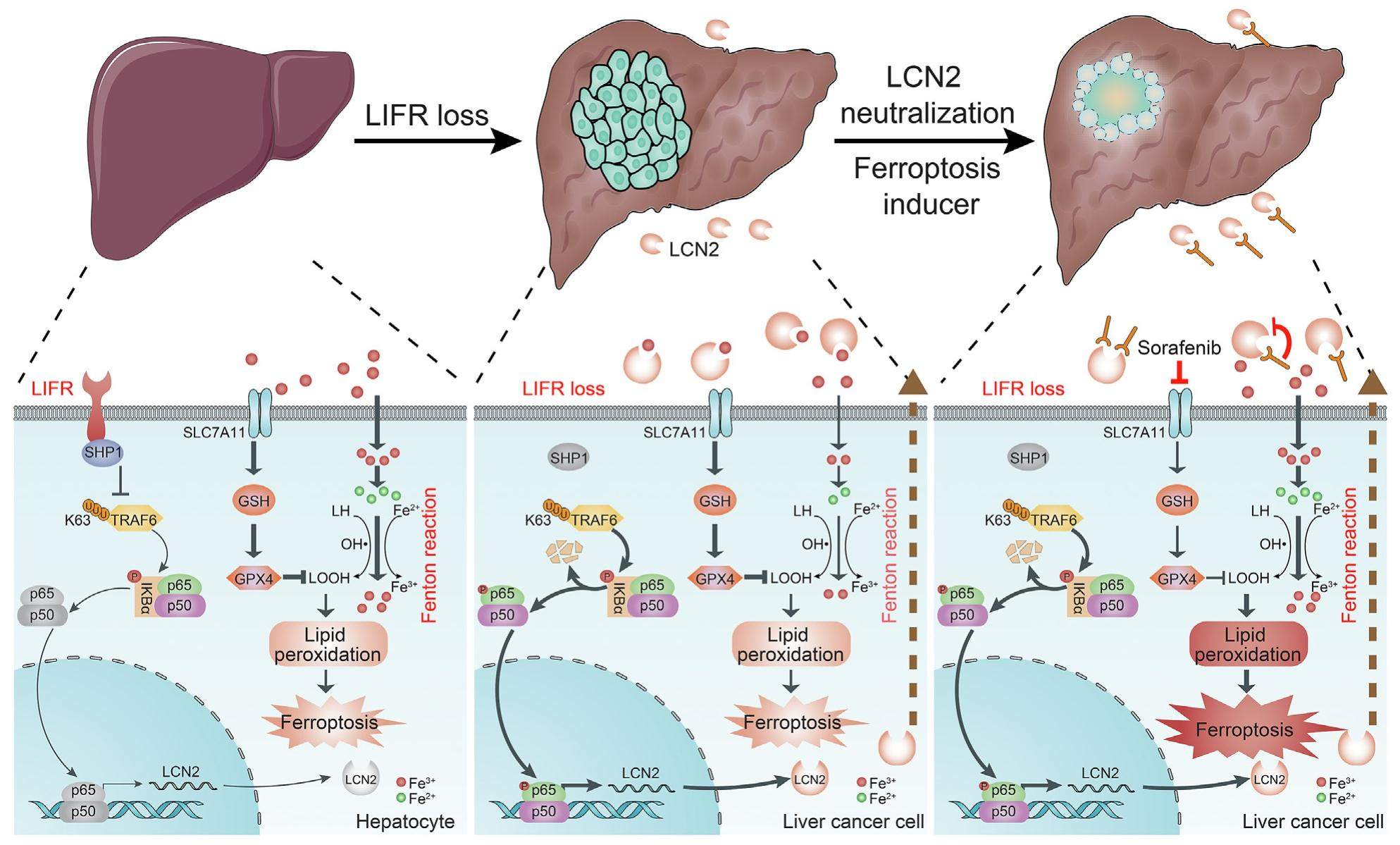
LIF-ting ferroptosis to improve liver cancer therapy


The liver is the largest internal organ that has vital roles in many processes, including digestion, detoxification, immunity, metabolism, blood clotting, and iron storage. It is susceptible to many pathological conditions that result in liver diseases. Liver cancer, ranking sixth in cancer incidence, is the fourth most common cause of cancer-related death worldwide and is the second most lethal cancer after pancreatic cancer. The 5-year survival rate is 18%. Unfortunately, liver cancer barely responds to chemotherapy andradiotherapy. Atpresent, surgicalresectionand transplantation are recommended for patients with earlystage liver cancer, but for patients with advanced liver cancer and poor liver function, systemic therapy is the only treatment option. Sorafenib is the first frontline drug approved by the Food and Drug Administration (FDA) for the treatment of hepatocellular carcinoma (HCC), which only prolongs the overall survival by approximately 3 months. Thus far, phase 3 clinical trials of most systemic therapies have not performed better than sorafenib in HCC. Recently, clinical trials of the combination of immune checkpoint inhibitors and anti-angiogenesis drugs have shown promising results in HCC, leading to FDA approval in 2020; however, this therapy only benefits a subset of HCC patients without predictive markers available.
